
Hello, everboarding:
Ramp faster, sell faster.

Learning in the flow of work: A science-based approach to sales onboarding
Combat the forgetting curve
Ditch forgettable training. Reinforce key concepts with contextual learning that sticks, delivered right when reps need it.
Bite-sized for retention
Maximize learning and retention with bite-sized training. Easily adapt content and embed it directly in your reps' workflow.
Reduced cognitive load
No more constant context-switching. Spekit meets your reps where they are so that they can focus on the task at hand.
Improved comprehension
By providing relevant learning prompts when and where reps need it, reps have the right context to apply the information correctly.
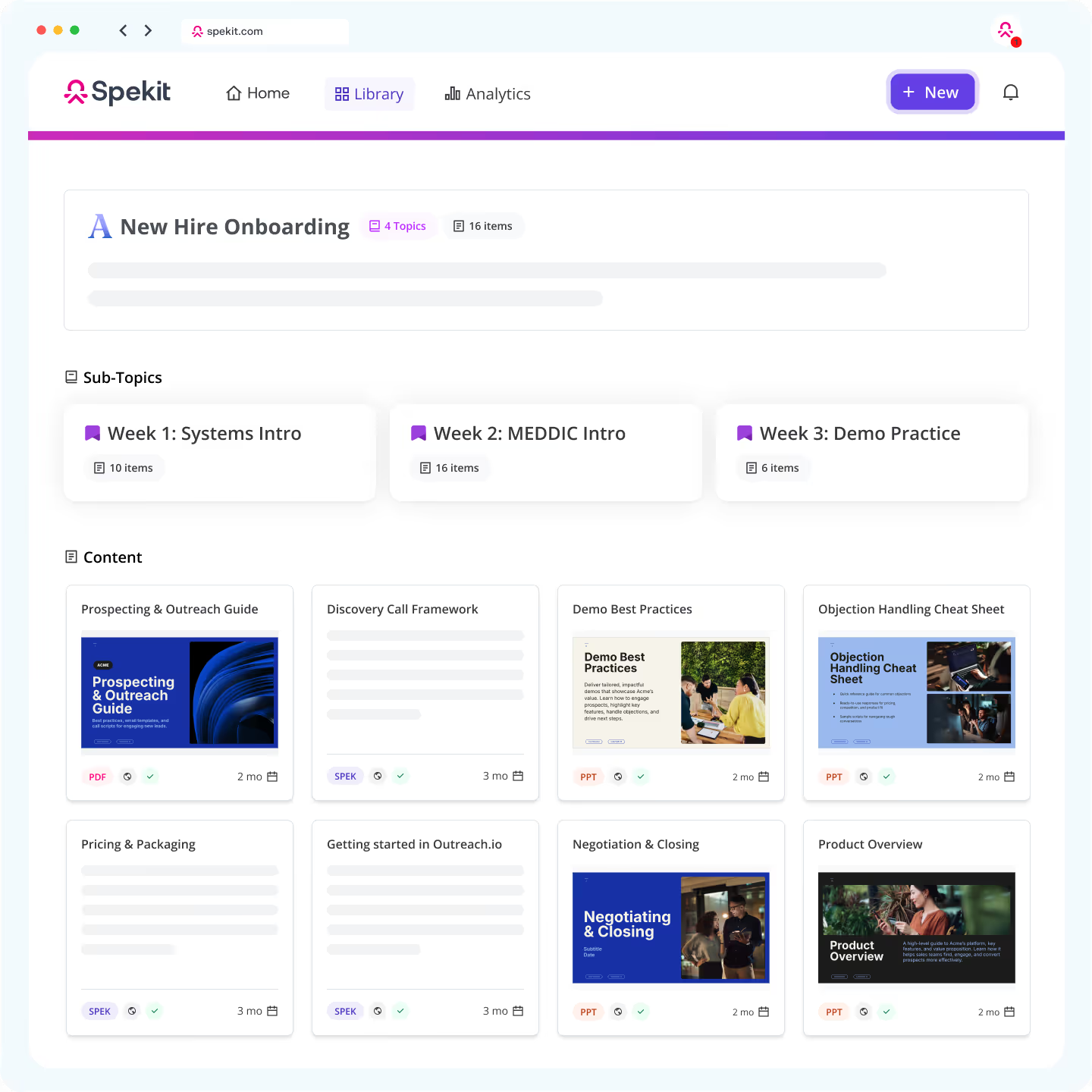
Create training playlists with a Spotify-like approach to content
Curate engaging training experiences with flexible Playbooks. Organize by topic, track learner progress, and easily update content.
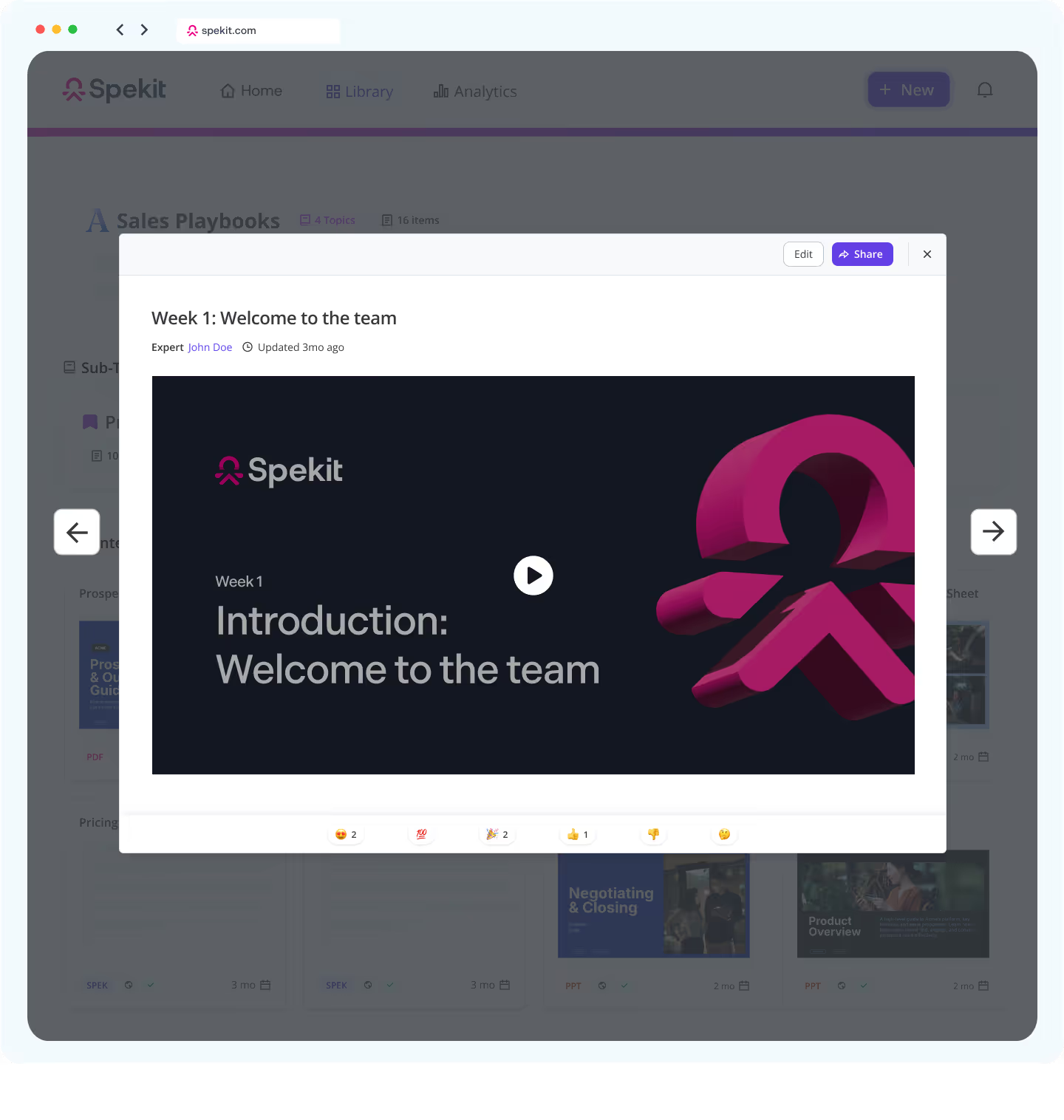
Streamline sales onboarding with guided courses
Turn sales onboarding into a competitive advantage with intuitive, handheld guidance on essential tools, processes, and methodologies so new reps can hit the ground running from day one.
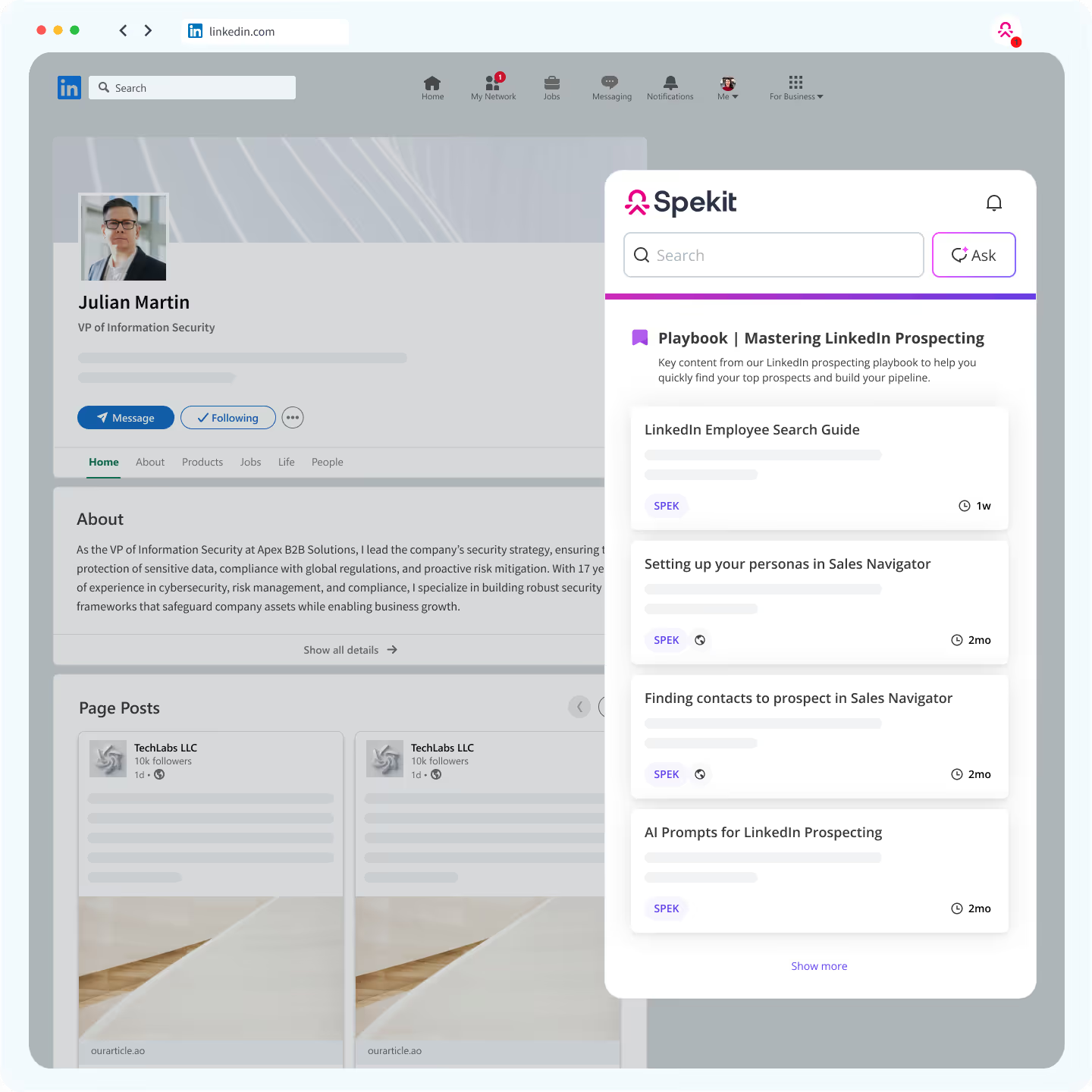
Provide AI training, recommendations and answers in any tool
With Spekit, every answer is only a click away, and recommended training automatically surfaces based on the tool or process you’re currently in.
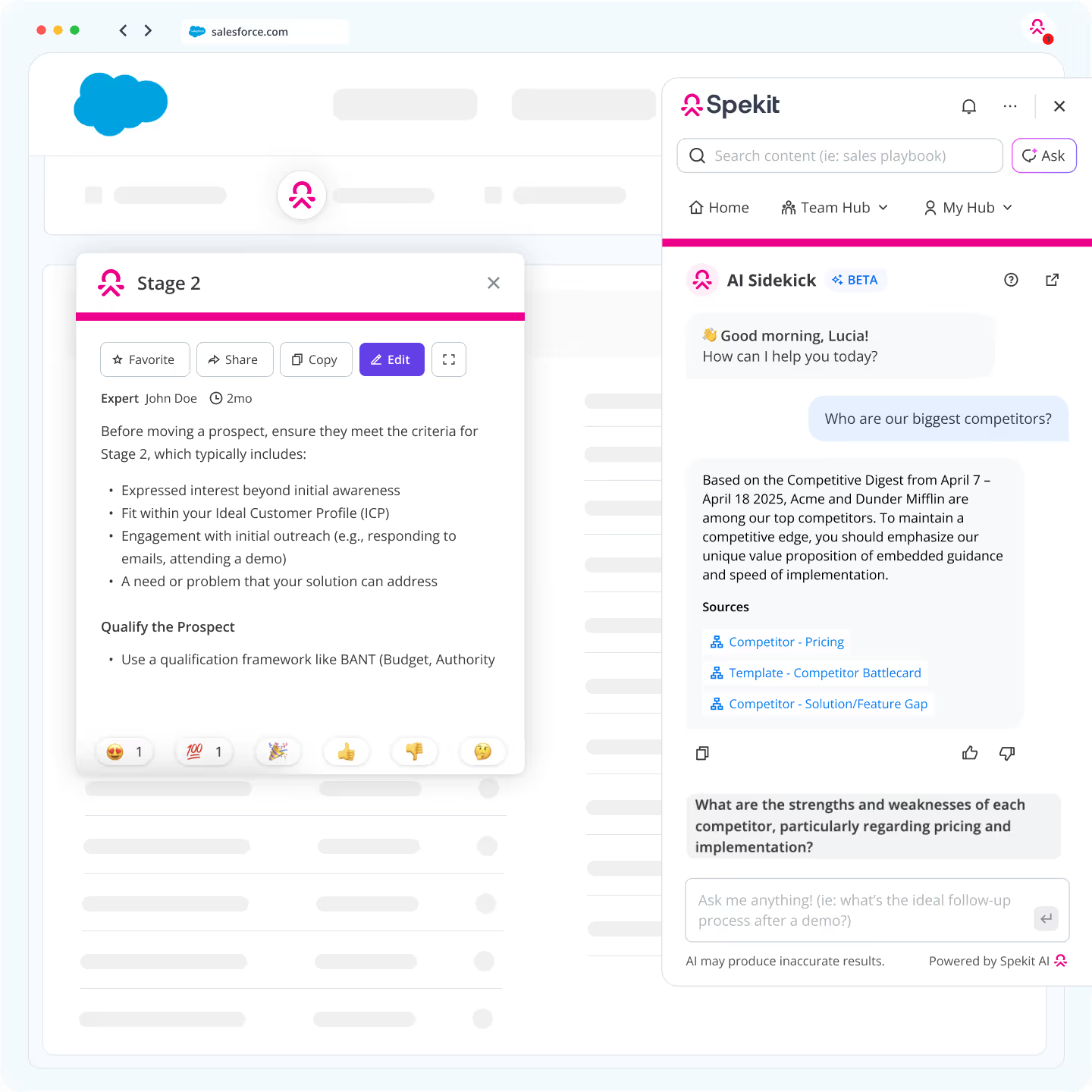
Boost rep confidence with embedded, contextual support
The average employee spends 3–11 hours each week searching for answers. Spekit automatically embeds and reinforces training in every platform your reps are in to eliminate context-switching and give your reps their time back.
Gartner® research reveals that organizations that use just-in-time learning are:
more likely to exceed seller revenue targets
more likely to exceed customer retention targets
more likely to exceed retention target

“With Spekit, we were able to grow our sales team from 2 to 20 in just 6 months. Plus, we’ve generated $3.7 million in pipeline and have already closed three-quarters of a million in that timeframe because we’ve been able to ramp up reps so fast.”

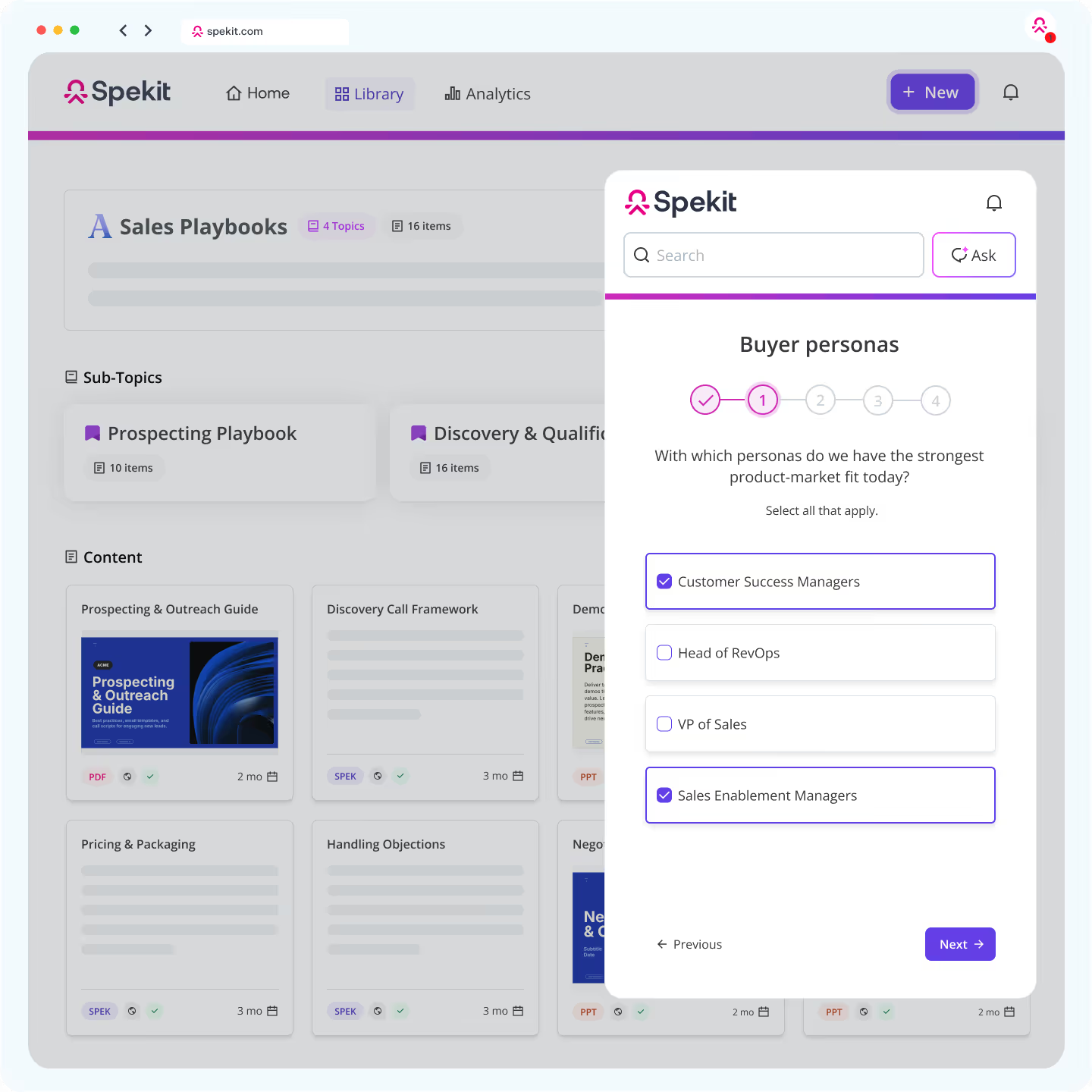
Quickly assess knowledge retention and understanding
Surface short, multiple choice quizzes wherever your team is working to quickly measure knowledge retention. Hold employees accountable for learning new processes and staying up-to-date. Measure the impact of training and improve content without disrupting productivity.
.avif)
Track progress and measure ramp
Assess your sales reps’ consumption, comprehension, and application of training content to quickly identify gaps in knowledge, training, or content your reps need to succeed.
AI-powered sales onboarding software that works where your reps work
Instantly empower your reps with everything they need to succeed, at their fingertips, the moment they need it.

